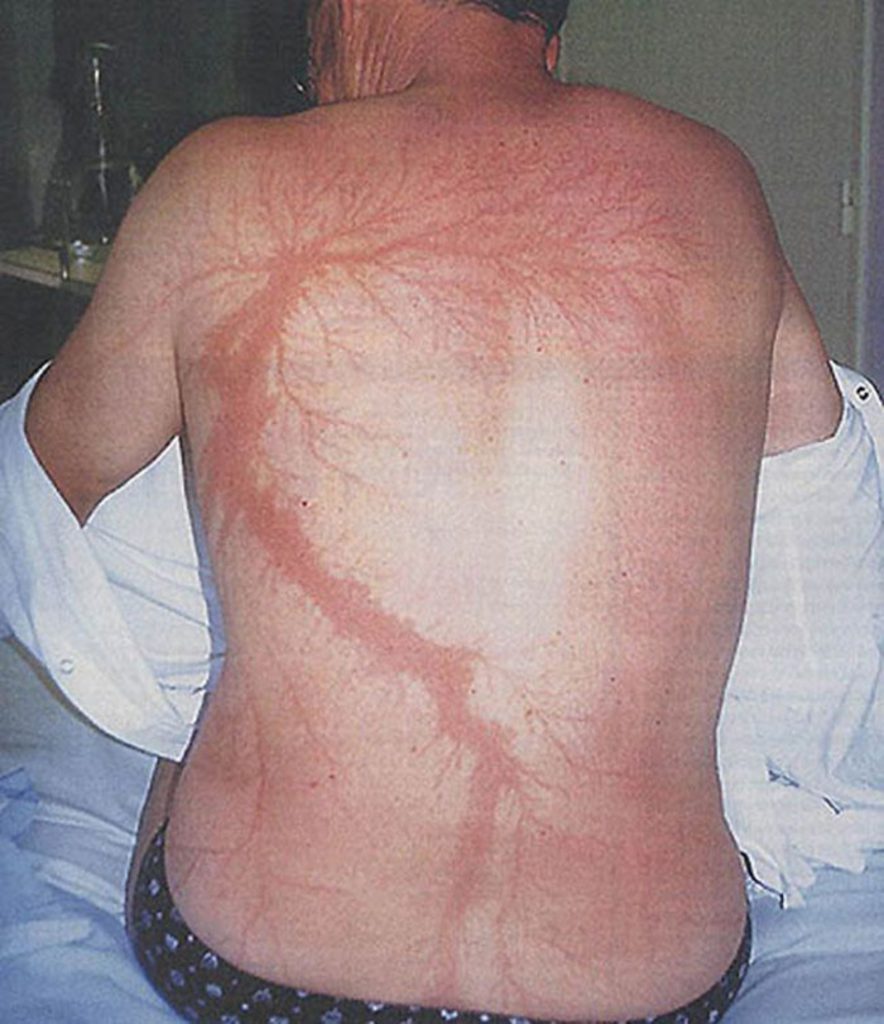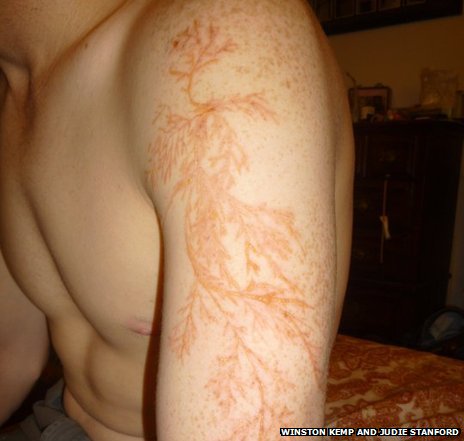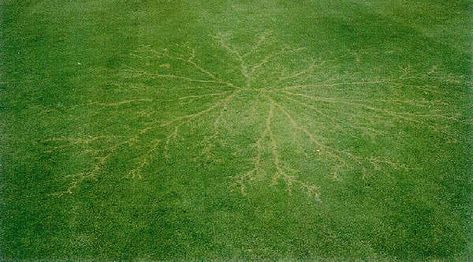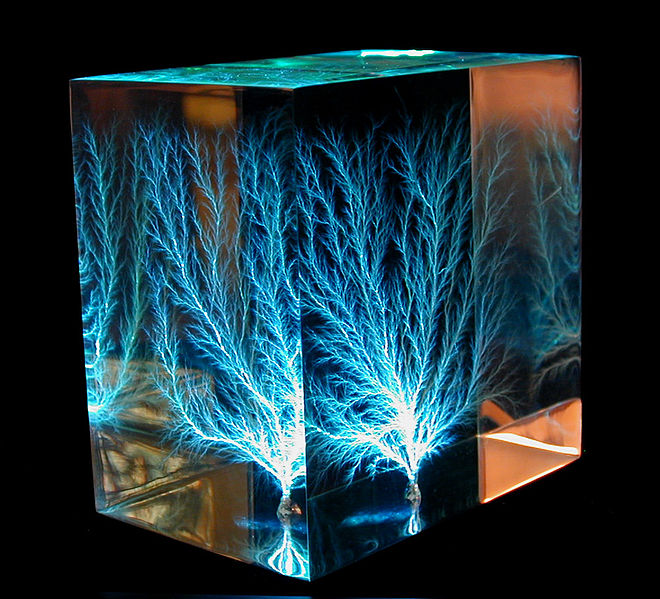Figure 1 is a beautiful fern or tree-like pattern formed when an electrical current of high voltage passes over the surface or through the insulator. This pattern is called Lichtenberg figure, named after a German physicist, Professor Georg Lichtenberg, who made this discovery back in 1777.
This branching pattern is a sparkling sight when formed in a cube or 3D block, but not so when it sparks on humans as shown in figure 2. When lightning strikes people, this striking pattern is formed, probably due to rupture of capillaries secondary to a huge amount of electrical discharge. This pattern is medically called ‘arborescent (tree-like) erythema or keraunographic markings.’ Other non-medical names include lightening flowers and skin feathering.

The case in the discussion here is of a 54-year-old man, lightning strike survivor, who was fortunate enough to be up and about till the time he landed in the emergency room, preceded by initial short-lived stupor right after the strike.
On examination, painless cutaneous branching pattern was observed over his back and extremities. These marks spontaneously disappeared in two days.

Another man, Winston Kemp, was reported to be struck by lightning in his pumpkin field during the storm. He happened to be an electrician by profession. Surprisingly he didn’t realise until keraunographic markings or Lichtenberg pattern appeared on his arm in an hour, eventually forming blisters and erythematous pattern. Over a months period, these marking got pale and ultimately disappeared altogether.
Does it cause serious or long term complications?
Although rare (1 in 300,00) and with rates decreasing every year, still thousands of people fall victim to the lightning strike, out of which, 90% get Lichtenberg scars, 10% die, whereas 70% have long term complications. The loud thunder and bright light can adversely affect the hearing and the eyesight, respectively. In severe cases, the patient may experience temporary blindness, clouding of lenses, perforation in retina or rupture of the tympanic membrane. The current can interrupt with the electrical impulses of brain, spinal cord or heart, giving a cardiac arrest, in which case a CPR would be necessary. Brain damage can lead to amnesia, seizures or other neurological deficits.
An intense electric shock can give burns in Lichtenberg pattern, damaging the skin and capillaries, along the path of electricity. Also, it can heat up any metallic jewellery worn by the victim, causing third-degree burns.
A lightning bolt can raise the temperature of the surrounding air up to 50,000 degrees Fahrenheit, which is many times more than the heat of the sun, also can contain 1 billion volts of electricity. By looking at the figures, the amount, extent and intensity of the damage to the human body can be imagined.
Interesting Fact:
This lightning flower pattern is not limited to the human body or 3D block, it has been seen on water and grasslands too. You may not be wanting the shock to watch one live, so here’s a picture.

References
What are Lichtenberg figures, and how do we make them? (2019, December 21). Retrieved from http://www.capturedlightning.com/frames/lichtenbergs.html
What Does It Look Like When A Person Gets Struck By Lightning? (n.d.). Retrieved from IFL science: https://www.iflscience.com/health-and-medicine/what-does-it-look-when-person-gets-struck-lightning/




